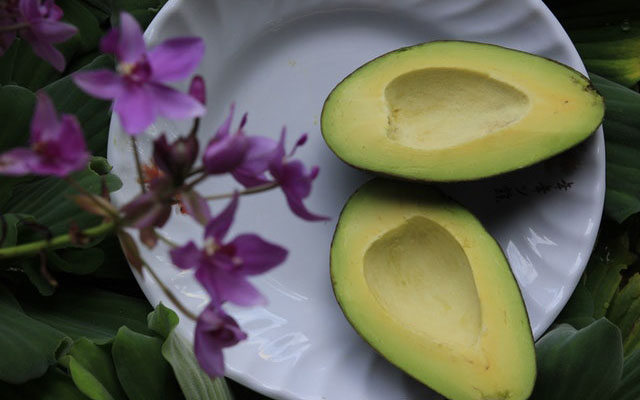Συμβουλές Εξοικονόμησης Ενέργειας
ΘΕΡΜΟΜΟΝΩΣΗ
Η κατάλληλη μόνωση είναι βασική προϋπόθεση για την προστασία κάθε κτιρίου από το κρύο και τη ζέστη.
Για να μειώσετε τις απώλειες θερμότητας μπορείτε να:
-
κλείσετε τυχόν χαραμάδες σε πόρτες και παράθυρα με μονωτικό υλικό, αυτοκόλλητες ταινίες του εμπορίου ή σιλικόνη
-
μην αερίζετε υπερβολικά τους χώρους που θα θερμάνετε
-
κλείνετε τα εξώφυλλα (παντζούρια) και τις κουρτίνες τις κρύες νύχτες του χειμώνα, για να διατηρείται η ζέστη μέσα στο χώρο
-
προσθέσετε θερμομόνωση στην οροφή του κτιρίου
-
αντικαταστήσετε τα παράθυρα από μονά τζάμια με νέα θερμομονωτικά διπλά τζάμια
-
προσθέσετε μόνωση στους τοίχους
ΘΕΡΜΑΝΣΗ ΧΩΡΩΝ
-
Αξιοποιείστε την ηλιακή ενέργεια για να θερμάνετε το κτίριο σας. Τις ηλιόλουστες χειμωνιάτικες μέρες να αφήνετε τον ήλιο να μπαίνει μέσα από τα νότια παράθυρα.
-
Αν έχετε κλιματιστικό, μη ρυθμίζετε το θερμοστάτη πάνω από τους 22oC. Για κάθε επιπλέον βαθμό σπαταλάτε μέχρι και 7% περισσότερη ενέργεια.
-
Μην καλύπτετε τα θερμαντικά σώματα με οποιοδήποτε τρόπο, γιατί μειώνεται σημαντικά η απόδοση του.
-
Αν έχετε κεντρική θέρμανση φροντίστε για τη σωστή ρύθμιση και συντήρηση του καυστήρα και τον καθαρισμό του λέβητα κάθε καλοκαίρι από εξειδικευμένο συντηρητή, ο οποίος εκδίδει και το πιστοποιητικό συντήρησης βάσει νομοθεσίας με μετρήσεις του βαθμού απόδοσης της εγκατάστασης, της θερμοκρασίας των καυσαερίων και της περιεκτικότητας τους σε διοξείδιο του άνθρακα και αιθάλη.
ΨΥΞΗ-ΚΛΙΜΑΤΙΣΜΟΣ ΧΩΡΩΝ
Πριν αποφασίσετε να αγοράσετε κλιματιστικό, καλύτερα να εξετάσετε τους εναλλακτικούς τρόπους με τους οποίους μπορείτε να έχετε δροσιά. Τα κλιματιστικά καταναλώνουν μεγάλες ποσότητες ηλεκτρικής ενέργειας και μάλιστα στις ώρες αιχμής και θα σας κοστίσουν ακριβά στη λειτουργία τους. Επί πλέον ρυπαίνουν αλλά και θερμαίνουν το περιβάλλον.
-
Σκιάστε όλα σας τα παράθυρα. Επιλέξετε το κατάλληλο σύστημα σκιασμού ανάλογα με τον προσανατολισμό του παραθύρου.
-
Φυτέψετε δέντρα κατά προτίμηση φυλλοβόλα για να σκιάσετε το κτίριο σας, αλλά και για να δημιουργήσετε καλύτερο ευνοϊκό ‘’μικροκλίμα’’, όπου αυτό είναι δυνατό.
-
Επιλέξετε ανοιχτά χρώματα στους εξωτερικούς τοίχους, τις οροφές αλλά και στις τέντες.
-
Μειώστε τις εσωτερικές πηγές θερμότητας. Τοποθετείστε λαμπτήρες και συσκευές χαμηλής κατανάλωσης. Μη χρησιμοποιείτε ενεργοβόρες συσκευές οι οποίες ταυτόχρονα θερμαίνουν και το χώρο (π.χ. ηλεκτρική κουζίνα, σίδερο) τις ώρες που έχει πολύ ζέστη.
-
Τις ζεστές μέρες να αερίζετε το κτίριο σας οπωσδήποτε και μόνο τη νύχτα.
-
Φεγγίτες, ανοίγματα πάνω από σκάλες, καμινάδες αερισμού, σε συνδυασμό με κάποια ανοίγματα σε χαμηλά σημεία του κτιρίου μπορούν να δημιουργήσουν πολύ αποτελεσματικό κατακόρυφο αερισμό, χωρίς να ανοίγετε όλα σας τα παράθυρα.
-
Αν οι εξωτερικές συνθήκες και τα ανοίγματα του κτιρίου σας δεν εξασφαλίζουν τον απαραίτητο αερισμό, τοποθετείστε ανεμιστήρες προσαγωγής και απαγωγής του αέρα.
-
Τοποθετείστε ανεμιστήρες οροφής στα δωμάτια. Ο ανεμιστήρας οροφής δροσίζει, ενώ καταναλώνει ελάχιστη ενέργεια (όση και ένας κοινός λαμπτήρας φωτισμού). Θα νιώθετε δροσιά, ακόμα και σε σχετικά υψηλές θερμοκρασίες και έτσι μπορείτε να απαλλαγείτε από την ανάγκη εγκατάστασης κλιματιστικού. Εναλλακτικά, χρησιμοποιείστε ανεμιστήρα δαπέδου.
Εάν αποφασίσετε να αγοράσετε κλιματιστικό:
-
Ενημερωθείτε για την ενεργειακή του κατανάλωση δεδομένου ότι θα αυξήσει το λογαριασμό σας, ιδιαίτερα τους καλοκαιρινούς μήνες.
-
Βεβαιωθείτε ότι είναι κατάλληλο για το χώρο σας. Συμβουλευτείτε ειδικευμένο μηχανικό και όχι απλούς πωλητές, πριν επιλέξετε. Εάν σκοπεύετε να εγκαταστήσετε κλιματισμό για ολόκληρο διαμέρισμα ή κτίριο, ζητείστε μελέτη.
-
Ρυθμίζετε το κλιματιστικό χρησιμοποιώντας ένα καλό θερμόμετρο τοίχου και μην επιδιώκετε θερμοκρασία χαμηλότερη από 26°C το καλοκαίρι.
-
Φροντίστε τα παράθυρα να είναι κλειστά όταν λειτουργεί το σύστημα κλιματισμού για να μη χάνεται πολύτιμη ενέργεια.
-
Εφαρμόζετε πιστά τις οδηγίες του κατασκευαστή για την τοποθέτηση και συντήρηση του κλιματιστικού – ο τακτικός καθαρισμός των φίλτρων επιβάλλεται και για λόγους υγείας.
ΦΩΤΙΣΜΟΣ
-
Αφήνετε το φυσικό φως να περνάει από όσο το δυνατόν περισσότερες πλευρές των χώρων. Έτσι επιτυγχάνεται μεγαλύτερη επάρκεια και καλύτερη κατανομή.
-
Για την καλύτερη ρύθμιση του φυσικού φωτισμού, προτιμείστε κινητά στόρια, παρά κουρτίνες στα παράθυρα.
-
Προτιμάτε τα ανοικτά χρώματα στους τοίχους του σπιτιού σας, καθώς κάνουν το εσωτερικό περιβάλλον φωτεινότερο.
-
Φροντίστε να μη μένουν αναμμένα τα φώτα σε δωμάτια, όταν δεν είναι απαραίτητο.
-
Προτιμήστε ένα χαμηλό γενικό φωτισμό και πρόσθετο τοπικό φωτισμό στα σημεία όπου το χρειάζεστε.
-
Χρησιμοποιήστε λαμπτήρες χαμηλής ενεργειακής κατανάλωσης. Μια κοινή λάμπα πυράκτωσης καταναλώνει ως και πέντε φορές περισσότερη ενέργεια από ένα λαμπτήρα φθορισμού που προσφέρει τον ίδιο φωτισμό. Οι λαμπτήρες χαμηλής ενεργειακής κατανάλωσης μπορεί να κοστίζουν περισσότερο από τους κοινούς λαμπτήρες, αλλά έχουν οκταπλάσια διάρκεια ζωής και καταναλώνουν τέσσερις φορές λιγότερο ρεύμα. Η περιεκτικότητα τους σε υδράργυρο καθιστά αναγκαία την σωστή διαχείριση τους κατα το τέλος της ζωής τους καθώς και σε περίπτωση που ο λαμπτήρας φθορισμού σπάσει, για τη δική σας ασφάλεια. Για το λόγω αυτό το Υπουρέίο Εμπορίου, Βιομηχανίας και Τουρισμού έχει εκδόσει ειδικό έντυπο για τα προτεινόμενα μέτρα που πρέπει να λαμβάνονται.
-
Να καθαρίζετε τακτικά τα φωτιστικά σώματα και τους λαμπτήρες.
ΘΕΡΜΟΣΙΦΩΝΑΣ – ΖΕΣΤΟ ΝΕΡΟ
-
Ανάψτε το θεμοσίφωνα σας όσο και όταν χρειάζεστε ανάλογα με τις ανάγκες σας για ζεστό νερό και μην τον αφήνετε αναμμένο άσκοπα.
-
Προτιμήστε το ντούς από το μπάνιο στη μπανιέρα. Ξοδεύετε 3 φορές λιγότερο ρεύμα και νερό.
-
Μην αφήνετε τις βρύσες σας να στάζουν και μην αφήνετε το ζεστό νερό να τρέχει άσκοπα.
-
Προτιμήστε έναν ηλιακό θερμοσίφωνα αντί ηλεκτρικό για τη θέρμανση του νερού (ο ηλιακός θερμοσίφωνας μπορεί να καλύψει κατά 70% τις ετήσιες ανάγκες σε ζεστό νερό με αντίστοιχη μείωση στη κατανάλωση ηλεκτρικού ρεύματος).
ΟΙΚΙΑΚΕΣ ΣΥΣΚΕΥΕΣ
Ηλεκτρική κουζίνα
-
Φροντίστε τα μαγειρικά σκεύη να εφαρμόζουν σωστά στις εστίες της κουζίνας. Σπαταλάτε 20-30% περισσότερη θερμότητα και ρεύμα όταν η βάση του σκεύους είναι 1-2 εκατοστά μικρότερη από την εστία. Χρησιμοποιώντας τη χύτρα ταχύτητας εξοικονομείτε 30-60% ρεύμα και 80% χρόνο.
-
Όταν βράζετε νερό, σκεπάζετε την κατσαρόλα με το καπάκι της. Θα βράσει γρηγορότερα και με μικρότερη κατανάλωση ενέργειας.
-
Αποφεύγετε τις άσκοπες προθερμάνσεις και το συχνό άνοιγμα-κλείσιμο του φούρνου. Κάθε φορά που ανοίγετε την πόρτα του φούρνου φεύγει το 20% της εσωτερικής θερμότητας. Καθαρίζετε τακτικά τα ηλεκτρικά μάτια και το φούρνο.
-
Για το ζέσταμα μικρών ποσοτήτων φαγητού προτιμήστε, εφόσον διαθέτετε, το φούρνο μικροκυμάτων γιατί εξοικονομεί ηλεκτρική ενέργεια και χρόνο.
Ψυγεία – Καταψύκτες
-
Το ψυγείο καταναλώνει αρκετή ενέργεια γιατί λειτουργεί όλο το 24ωρο. Η ενεργειακή ετικέτα που διαθέτουν όλες οι σύγχρονες ηλεκτρικές συσκευές μας δίνει πληροφορίες για την ενεργειακή απόδοση του. Επιλέξετε μια συσκευή με χαμηλή ενεργειακή κατανάλωση.
-
Τοποθετήστε το ψυγείο σας μακριά από την ηλεκτρική κουζίνα, το καλοριφέρ και μέρη που τα βλέπει ο ήλιος γιατί έτσι μπορεί να αυξηθεί η κατανάλωση ρεύματος μέχρι και 30%.
-
Αν το ψυγείο σας δεν έχει αυτόματη απόψυξη, φροντίστε να κάνετε τακτικά απόψυξη. Ένα στρώμα πάγου πάχους 5 χιλιοστών αυξάνει κατά 30% την κατανάλωση ρεύματος.
-
Ρυθμίστε το θερμοστάτη του ψυγείου ώστε η θερμοκρασία στο θάλαμο συντήρησης να είναι 7oC και του καταψύκτη στους -18oC. Έτσι εξοικονομείτε μέχρι και 15% ρεύμα.
-
Μην ανοίγετε συχνά την πόρτα του ψυγείου και μην κρατάτε πολλή ώρα ανοικτή. Φρονίστε το λάστιχο της πόρτας να είναι καθαρό και να εφαρμόζει πολύ καλά.
-
Μην καλύπτετε τα κενά εξαερισμού του ψυγείου, ξεσκονίζετε καλά τις σωληνώσεις (πλέγμα) στην πίσω πλευρά του και αφήνετε τουλάχιστον 5 εκατοστά απόσταση από τον τοίχο.
-
‘Οταν απουσιάζετε από το σπίτι σας για μεγάλα χρονικά διαστήματα, π.χ. σε διακοπές, βγάζετε το ψυγείο από την πρίζα, αδειάζετε το και αφήνετε την πόρτα του ανοικτή.
-
Μη βάζετε ζεστά φαγητά μέσα στο ψυγείο. Καλύτερα να περιμένετε να κρυώσουν πρώτα (συνίσταται και για λόγους υγείας).
Πλυντήριο ρούχων
-
Επιλέξτε ένα πλυντήριο με μικρή κατανάλωση νερού και ρεύματος. Υπάρχουν αρκετές διαφορές από συσκευή σε συσκευή.
-
Για μεγάλη εξοικονόμηση ενέργειας μπορείτε να επιλέξετε καινούργιο πλυντήριο τύπου Hot Fill, που έχει δυνατότητα σύνδεσης με τον ηλιακό θερμοσίφωνα.
-
Είναι αποδεδειγμένο ότι τα ρούχα καθαρίζουν εξίσου καλά στους 60oC όσο και στους 90oC και με τα νέα προγράμματα και καθαριστικά ακόμα και στους 40oC. Προτιμήστε λοιπόν τη λειτουργία σε χαμηλότερη θερμοκρασία.
-
Φροντίστε να γεμίζετε ομοιόμορφα το πλυντήριο και προτιμάτε να βάζετε όλη τη ποσότητα που χωράει (συνήθως 5-6 κιλά ρούχα).
-
Εφαρμόζετε τις οδηγίες του κατασκευαστή, προκειμένου να εξοικονομείτε ηλεκτρική ενέργεια, νερό, απορρυπαντικό και για την καλή λειτουργία της συσκευής.
-
Συνδέστε τον ηλιακό θερμοσίφωνα με το πλυντήριο σας για ζεστό νερό.
-
Όταν απουσιάζετε, κλείνετε τη παροχή νερού του πλυντηρίου.
Πλυντήριο πιάτων
-
Επιλέξτε ένα πλυντήριο με μικρή κατανάλωση νερού και ρεύματος. Υπάρχουν αρκετές διαφορές από συσκευή σε συσκευή.
-
Φροντίστε να γεμίζετε ομοιόμορφα το πλυντήριο και προτιμάτε να βάζετε όλη τη ποσότητα που χωράει.
-
Εφαρμόζετε τις οδηγίες του κατασκευαστή, προκειμένου να εξοικονομείτε ηλεκτρική ενέργεια, νερό, απορρυπαντικό και για την καλή λειτουργία της συσκευής.
-
Όταν απουσιάζετε, κλείνετε τη παροχή νερού του πλυντηρίου.
Μικροσυσκευές
-
Πριν αγοράσετε μια συσκευή ενημερωθείτε για τη κατανάλωση της σε ρεύμα, δεδομένου ότι υπάρχουν διαφορές από συσκευή σε συσκευή (ακόμη και στη λειτουργία αναμονής).
-
Οι μικρές συσκευές γενικά καταναλώνουν λιγότερο ρεύμα από τις μεγάλες, για αυτό όποτε μπορείτε, προτιμήστε τις.
-
Μην αφήνετε αναμμένη την τηλεόραση, την καφετιέρα, το σίδερο κ.λ.π.. όταν δεν τα χρειάζεστε.
-
Κλείνετε την τηλεόραση, το βίντεο και το στερεοφωνικό από το διακόπτη της συσκευής και όχι από το τελεκοντρόλ, γιατί έτσι οι συσκευές αυτές μένουν σε λειτουργία αναμονής (stand-by) και συνεχίζουν να καταναλώνουν ρεύμα.
- TIPS & ADVICE
- |
- Aug 06 2019
- |
-
Third satellite casino inaugurated in Ayia Napa

The Mayor of Ayia Napa officially inaugurated the new facilities of Cyprus Casinos “C2” Ayia Napa (C2 Ayia Napa) on Wednesday, 31 July, following its opening earlier this month, according to a press release.
C2 Ayia Napa is the third licensed satellite casino to open its doors in Cyprus following C2 Nicosia and C2 Larnaca and the original C2 Limassol temporary casino.
“Located in the heart of Ayia Napa’s vivid tourist area and featuring 50 state-of-the art Slot Machines as well another popular Columbia Bistro, C2 Ayia Napa is set to enhance the overall visitor experience while enriching Ayia Napa’s tourism product”, the press release said.
It added that the opening event was attended by prominent personalities including members of Ayia Napa’s Municipality Council, media representatives, representatives of the Cyprus Hotel Association, and the Tourist Trade Industrial Company of Famagusta.
The guests had the opportunity to tour the casino premises, be updated by Melco’s executives on recent developments and gain valuable insights into the casino’s operation.
Mayor of Ayia Napa Yiannis Karousos expressed his satisfaction for the casino’s opening and stated that he was confident that the new facilities will contribute to enhancing Ayia Napa’s tourism product and create multiple benefits for the local economy and community. The Mayor also noted that the casino will contribute to establishing Ayia Napa as a year-round destination.
“C2 Ayia Napa is a new and particularly important addition to the city, aiming to boost tourism and provide an exceptional entertainment experience to all of its guests. Given the casino’s ideal location, the prospects opening up are promising”, said Craig Ballantyne, Property President of City of Dreams Mediterranean and Cyprus Casinos “C2”.
He also highlighted that more than 40 people are currently employed at C2 Ayia Napa.
Source: Stockwatch
- MARKET TRENDS
- |
- Aug 02 2019
- |
Eurobank: Προχωρά σε πώληση 950 ακινήτων

Δεσμευτικές προσφορές περιμένει η τράπεζα για τα πακέτα «Star» και «Opus». Bain Capital και Brook Lane Capital μεταξύ των ενδιαφερομένων. Η ανάκαμψη της αγοράς ακινήτων «ζεσταίνει» και το τίμημα. Αμεσα η επιλογή του αγοραστή.
Μια ανάσα πριν από την πώληση των δύο πακέτων 950, αθροιστικά, ακινήτων -Star και Opus- βρίσκεται η Eurobank, καθώς σύμφωνα με ασφαλείς πληροφορίες, την επόμενη εβδομάδα και έως τις 10 Αυγούστου η τράπεζα θα δεχθεί τις δεσμευτικές προσφορές και αμέσως θα επιλέξει τον αγοραστή.
Πρόκειται για τα πρώτα πακέτα πώλησης αμιγώς ακινήτων, δηλαδή δεν συνδέονται με μη εξυπηρετούμενα δάνεια. Τα ακίνητα έχουν περιέλθει στο χαρτοφυλάκιο της Eurοbank ως ανακτηθείσες εγγυήσεις από πλειστηριασμούς και κατασχέσεις και έχουν συνολική λογιστική αξία (book value) 110 εκατ. ευρώ.
Πέραν των εν λόγω δύο πακέτων, η τράπεζα έχει γκρουπάρει άλλα 150-200 ακίνητα, από κατοικίες και εμπορικά μέχρι βιομηχανικά, τα οποία θα πουλήσει τους επόμενους μήνες.
Η ανάγκη μείωσης του στοκ των ακινήτων για τις ελληνικές τράπεζες είναι επιτακτική καθώς αποτελεί δέσμευσή τους προς τον Ενιαίο Εποπτικό Μηχανισμό (SSM) και η πρόοδος ελέγχεται ανά τρίμηνο με βάση τους στόχους που έχουν υποβάλει -έως το τέλος του 2021- στην εποπτική αρχή της Φρανκφούρτης.
«Μνηστήρες» και τίμημα
Από την κατάθεση των μη δεσμευτικών προσφορών φάνηκε, σύμφωνα με πηγή που γνωρίζει τη διαδικασία, ότι υπάρχει σημαντικό ενδιαφέρον από την πλευρά των επενδυτών για την αγορά real estate. Γεγονός που σύμφωνα με τις εκτιμήσεις, αλλά και με δεδομένη την ανάκαμψη των τιμών, οδηγεί στο συμπέρασμα ότι το τίμημα για την αγορά των δύο πακέτων θα κινηθεί σε ικανοποιητικά επίπεδα.
Με βάση άλλη πηγή, τα ξένα funds και επενδυτικές εταιρείες που δείχνουν ιδιαίτερο ενδιαφέρον για την ελληνική αγορά ακινήτων και πρωταγωνιστούν στο ράλι της διεκδίκησης των δύο πακέτων της Eurobank είναι το Brook Lane Capital, το οποίο έχει ήδη τοποθετηθεί στην ελληνική αγορά και εξαγόρασε τα ακίνητα του Βωβού που πούλησε η Αlpha Βank, και το αμερικανικό fund Bain Capital, το οποίο επίσης έχει επενδύσει την Ελλάδα και αγόρασε τους προηγούμενους μήνες το πακέτο Amoeba από την Τράπεζα ΠειραιώςΠΕΙΡ +4,34%.
Η δομή των δύο πακέτων
Το πακέτο με την επωνυμία «Star» αποτελείται από 670 residential ακίνητα, δηλαδή από κατοικίες, οικόπεδα κ.ά. Η λογιστική αξία τους ανέρχεται σε 23-24 εκατ. ευρώ και η πλειοψηφία των τεμαχίων βρίσκεται στην επαρχία, ακολουθεί η Αττική, η Θεσσαλονίκη και η νησιωτική Ελλάδα.
Το «μικρότερο» σε τεμάχια αλλά μεγαλύτερης αξίας πακέτο, υπό τον τίτλο «Opus», αποτελείται από 280 commercial ακίνητα (βιομηχανικά, καταστήματα, γραφεία, αποθήκες κ.ά.), η λογιστική αξία των οποίων ανέρχεται στα 85 εκατ. ευρώ. Η πλειοψηφία τους βρίσκεται στην Αττική, ακολουθεί η Θεσσαλονίκη και οι υπόλοιπες περιφέρειες της χώρας.
Πηγή: Euro2day
- FINANCE
- |
- Aug 01 2019
- |
Why we need an affordable housing scheme
HOUSING is so much more than simply having a roof over our heads. It gives us a personal sense of place and home and is the foundation of family and community wellbeing. However, with the increased cost of private-sector housing compared with the level of household income and expenditure, a significant number of us lack the resources to purchase a home. Without subsidised housing, many households will not be able to buy a home of decent standards at affordable prices.
Hard-working people who earn minimum wages can barely afford rent, let alone consider buying a home. Recognising this, the government published directives in May this year which encourage the private sector to include affordable housing in their residential developments for sale and rent. But affordable housing is not just about the price. It is about what people can afford relative to their income, specifically focused on those who are at the lowest two income bands.
Housing is considered ‘affordable’ when it costs no more than 30 per cent of gross household income. Everyone should have the opportunity of a decent home that they can afford, with the added benefit of being in a sustainable mixed community.
This Policy is essential to any inclusive and well-functioning community, as well as a productive economy. For this reason, it focuses on the connections shared between people, place and home and delivers greater social and economic outcomes. After all, having a home is not simply having a roof over our heads, but is also about belonging to your community.
Real and enduring affordability for people to have a home is needed and the government has taken the first step in the right direction.
Affordable housing is a generic term used to describe housing that is affordable to lower or middle-income households. It is provided to eligible households whose needs are not met by the market and provides availability at a low cost, which is enough for them to afford, based on their income and local house prices. In addition to widening the opportunity for homeownership, it offers greater quality homes for those in need and provides more flexibility and choice to those who rent.
More importantly, it fills the multiple gaps in our housing market. For example, people on very low incomes may need heavily subsidized solutions like social housing, whilst those on moderate incomes may need assistance to get onto the property ladder. But what about people on the lower end of the low-income band who often earn too much for the heavily rationed social housing system? The delivery of affordable housing will fill these gaps and includes schemes for young people who want to move out of their family home and widens the opportunities for homeownership for our key workers who provide vital services to the community, such as our police officers, nurses and school teachers.
The government’s directive outlines that affordable housing may be delivered in two methods and types; Intermediated Rented Houses and Discounted Equity Homes.
The first reduces the levels of rent below that which is offered in the private rented market, whilst the second has a simple discount for the purchaser on its market price, so the purchaser can buy the whole home at a reduced rate. The discount is the land value which the landowner has gained through the planning incentives. The directive aims to provide planning incentives by increasing the density so that part of the increased density will be sold at a fixed selling price to the eligible individuals and families.
The specifics
Provided that the land falls within a residential planning zone with a density of 1,100:1 and more and the land area is equal to four plots, that is 2,100m², the landowner may exercise his right to implement the provisions of this directive in the development proposals for a unified development.
The directive provides that an additional 25 per cent density may be granted to the development whilst 10 per cent of the overall density shall be assigned for sale under the affordable housing policies and the remaining will be sold by the landowner to the open market. There are certain conditions and provisions as to how best the directive may be applied and the consultation and agreements that need to be in place prior to the submission of a planning application.
The maximum density may be enhanced by other directives to maximise the density up to 30 per cent, by using, for example, the directive for Energy 1/2014 which benefits the developments by a further 5 per cent of the permitted density.
In order to harmonise the 10 per cent of the affordable area, the directive provides that the area of the affordable dwellings may be reduced by 10 per cent of the permitted as set out in the Development Plan of 2011.
The selling price for the affordable dwellings is set based on the construction index reflected on the minimum specification standards. These are fixed for 2019 at €870/m² for apartments and €1.050/m² for houses. The Land Development Corporation has published invitations to landowners to consider the affordable housing policies.
The added cost to the residential developments is the provisions relating to the parking at basement level in developments exceeding the ten residential units.
Appendix 1 of the directive 1/2019 also provides incentives in providing dwellings for affordable rent whose duration is for two years as from 15th May 2019. Affordable rent is considered to be 20 per cent below the rental market.
The directive provides that in planning zones with at least 1,100:1 density and the plot to be 2,000m² net, the landowner may benefit from the provisions of this directive. The development should be completed within three years from the date a building consent was granted. In order to facilitate the rental market it provides that 70 per cent of the density area shall be designated for rented accommodation for eight years and the remaining 30 per cent of the density may be sold to the open market from the outset to provide a cash flow for the development to the landowner. The minimum dwelling areas may be reduced under this incentive by 20 per cent instead of 10 per cent as the main directive provides.
There are further incentives arising from the directive with a two-year limitation programme from the date of issue, wherein residential plots of land with a net area equal to 3,000m² or more having permitted density ratio of 1,40:1.
The directive provides that the density may be increased by 45 per cent out of which the 20 per cent of the density shall be assigned for the development of affordable housing and the remaining density gained to the open market. The directive provides for certain design parameters and distances from the boundaries of the adjoining properties since the maximum permitted number of storeys will be extended by further two storeys.
Rental is now the second largest form of tenure in Cyprus. As such, it is imperative that in order to tackle the housing shortage, we should increase property investment across all tenures. As a concept, affordable housing is also interesting to long-term investors like pension funds who want a long-term income stream and like the social contribution of high-quality rental.
Source: CyprusMail
- MARKET TRENDS
- |
- Jul 29 2019
- |
Animal Party calls for increase in safety for pets at airports
The Animal Party has called on the government and the airports to increase safety measures during the transport of pets following the death of a kitten at Larnaca airport two weeks ago, an announcement said on Wednesday.
Earlier a group of protestors gathered outside the airport calling for increased safety for animals at Larnaca and Paphos airports. They requested a meeting with the Hermes airport heads.
The party informed airport officials about an online petition started by a Gloria Mew following the cat’s death that has been signed by over 22,000 people.
The party called on the Ministry of Transport, the airports and the police to better train staff to help passengers with animals.
“Clear Instructions (Greek, English, German, Dutch, Russian) should be written explaining to people carrying animals what the procedures are. Instructions should be visible and placed in a position where they can be seen and/ or handed out to the handlers,” the letter said.
The party added that animals that are travelling are already stressed and that they should be handled with calm and care.
“Provision should be made to ensure that the noise from machinery or from other sources be reduced to a minimum,” the party said.
Options for handlers should be in accordance with the EU regulations, the party said, adding that x-ray machinery used at airports should clearly indicated if they are pet-friendly.
“A safe room must be provided to allow animals travelling cargo to be held safely and securely while the travel box is being scanned,” the party said.
A few weeks ago, Animal Action Cyprus, a UK Registered Charity that helps rescue Cyprus strays, launched a petition calling on Hermes to provide a room where animals can be safely held during the scanning process without the opportunity to run off.
If they cannot provide that, then they need to purchase an X-ray machine that is safe for animals like the one at Heathrow Airport, the group said.
Another volunteer who witnessed the incident last week said it was bound to happen eventually as the room where the animals are taken is completely unsafe, and there have been several incidents in the past involving travelling pets but this was the first time an animal had died.
Source: CyprusMail
- MARKET TRENDS
- |
- Jul 25 2019
- |
IEA Report: Bitcoin Causes 0.03%-0.06% of Global CO2 Emissions

NEWS
According to a report released on July 23 by the International Energy Agency Bitcoin (BTC) mining is likely responsible for 10‑20 Megatonne (Mt) of carbon dioxide (CO2) per year or 0.03-0.06% of global energy-related carbon dioxide emissions.
Bitcoin consumed more in 6 months than Ireland in 12
Per the report, the recent price and hash rate increase of the Bitcoin network increased its energy consumption, and it is estimated that during the first six months of 2019 it has already consumed 29 TWh. This is more than the annual energy consumption of Ireland (26 TWh).
Annual Bitcoin’s energy consumption estimates range from 20 TWh to 80 TWh, with the agency’s own estimate being 45 TWh. But despite allegedly consuming more energy than Ireland, this means Bitcoin still consumes less than electric vehicles (58 TWh in 2018).
Bitcoin mining is mostly powered by renewable energy
The report’s author further points out that Bitcoin mining hotspots tend to start in places rich in cheap, renewable energy. The paper also cites research claiming that roughly 76% of the energy consumed by Bitcoin is renewable and using this data its estimates of CO2 emissions.
This last point is in line with the estimates of cryptocurrency investment products and research firm CoinShares, which estimated that 74.1% of bitcoin mining is powered by renewable energy in its biannual mining report released in June.
Source: Cointelegraph
- FINANCE
- |
- Jul 24 2019
- |
Never Ever Put These 15 Foods in Your Fridge
We tend to think of the refrigerator as a tool to preserve food for as long as possible. With most foods, that’s true. Without the fridge we couldn’t keep meat, dairy products, or many types of produce in the house. Refrigerators truly are a modern miracle that revolutionized the way families eat.
But as it turns out, there are certain foods that actually lose freshness in the refrigerator. Sometimes chilling food diminishes the flavor or changes the texture.
You’ll want to review all 15 of the foods on our list to improve your cooking and enjoy your food more. If you’ve been putting #9 in the fridge, you have probably never tasted a truly delicious one of these.
Storing the following foods at room temperature can actually help you avoid inadvertently wasting so much good stuf.
1. Potatoes

Potatoes are best stored in a cool, dark environment, but the refrigerator is too cold. The chill starts to break down the starch in the potatoes, causing a gritty texture that is unpleasant to eat.
The starch also begins to turn to sugar in the fridge, further impacting the flavor.
2. Onions

Onions will spoil more quickly in the refrigerator than on the counter. They’ll get moldy and mushy before you know it. It’s best to store onions at room temperature, but keep them out of direct sunlight.
Once the onion is peeled and cut, you will want to refrigerate it. Just place it in a sealable bag and store it in the vegetable drawer.
3. Garlic

Garlic tends to lose its flavor when stored in the fridge. To maintain that pungent taste, keep it in a cool and dry container with some ventilation.
A paper bag is a great example. But garlic does still begin to degrade once the head has been broken open. Be sure to use those cloves within 10 days.
4. Melon

Whole melons, such as cantaloupe, watermelon, and honeydew, taste best when stored at room temperature.
Some research even suggests that refrigerating melon will degrade the antioxidant content more quickly, so eating it at room temperature makes that fruit healthier, too. After cutting, you can store melon in the fridge for about 3-4 days.
5. Honey

Honey will crystallize when kept in the refrigerator. It becomes grainy and virtually solid, so it is nearly impossible to use as well as unpleasant.
Honey keeps for a really long time as long as it is stored at room temperature. Honey that has solidified can be recovered by gently warming the bottle in warm water.
6. Bread

Bread is relatively perishable in general; it just doesn’t last very long before molding. Some people put it in the refrigerator to stave off mold growth, and it does help in that sense. But refrigerating bread also dries it out so you can’t enjoy it anyway.
Bread is best stored in a bread drawer or in the pantry. If you need to extend its life, freeze it and then toast slices as needed.
7. Nuts

Refrigerating nuts can extend their life by preventing the oils from becoming rancid. But even so, you won’t want to eat them chilled because they tend to lose their distinctive nutty flavor as well as absorb the odors of other food in the fridge.
It’s best to store nuts in an airtight container at room temperature. To revive nuts that have been refrigerated, you can toast them in a dry pan before eating.
8. Coffee

If you love coffee, you know that there is a huge difference between great coffee and bad coffee.
Refrigerating the beans, either whole or ground, will cause watery condensation to build up, and that makes for a seriously underwhelming brew. Keep those beans in an airtight container at room temperature instead.
9. Tomatoes

While a lot of produce does better in the refrigerator, tomatoes are best stored on the counter. Chilling whole tomatoes strips their flavor and makes the texture mealy.
If your tomatoes are under-ripe, put them on a sunny windowsill. If they begin to over-ripen it’s best to cook them, after which they can be stored in the fridge.
10. Hot Sauce

It’s okay to store hot sauce in the refrigerator, but it does steal some of the spicy heat of the peppers. And there is really no need to chill hot sauce to preserve it.
There is plenty of vinegar in there that prevents bacterial growth.
11. Chocolate-Hazelnut Spread

This tasty spread goes great on graham crackers, toast, or fruit, but when you keep it in the fridge it solidifies and can’t be spread.
Cold chocolate-hazelnut spread also loses some of its distinctive flavor. In general, unopened containers can keep for two months in the pantry. Open containers are safe for about a month past their sell-by date even without refrigeration.
12. Apples

You can refrigerate your apples if you prefer them cold, but there is no need to. In fact, chilling them tends to break down their crispness.
Apples are a nice fruit to display on a table or counter for a couple of weeks. At that point, any that haven’t been eaten can be put in the fridge to extend their life a few days more.
13. Avocados

It can be tricky to catch avocados at the peak of their ripeness, and they are just not good when they’re too hard or too soft. Eating an under-ripe avocado is like biting into a raw potato, and overripe avocado is mushy and blackened.
Still, it’s only good to refrigerate avocado if you have one that has gotten ripe but you aren’t ready to use it. That can buy you a couple of extra days.
14. Berries

Berries just don’t last very long after picking, so it’s best to buy them on the day you want them rather than store them.
Still, the fridge is better than the counter if you are going to hang on to berries for a few days. However, most get moldy very quickly once they become wet, so never rinse a whole carton and then store it.
15. Stone Fruit

Stone fruit like plums, peaches, nectarines, and apricots ripen best at room temperature. It’s ideal to store them in a paper bag on the counter or in the pantry for peak flavor.
However, if your stone fruit has ripened but you can’t eat it right away, your fridge’s fruit bin will keep it from going mushy for a couple more days.
Conclusion

Simply keeping these items in the pantry, on the counter, or in a drawer will improve their flavor, texture, and longevity. However, chilling these foods is recommended after they have been cut or cooked.
Additionally, the fridge can preserve already-ripe fruit for a couple more days, but remember that fruit does not ripen well there. We hope this info will help you begin to enjoy your food in a way you didn’t know was possible!
Source:http://hhdresearch.org
- TIPS & ADVICE
- |
- Jul 23 2019
- |
Cabinet to issue exploitation licenses for Aphrodite gas field

The Cyprus Council of Ministers is expected to issue exploitation licenses for the Aphrodite gas reservoir paving the way for the monetization of Cyprus’ so far only commercial discovery, Minister of Energy Giorgos Lakkotrypis said in Paralimni on Sunday.
The Aphrodite gas field in block 12 of the Cyprus EEZ was discovered in 2011, while an appraisal well carried out in 2013 confirmed quantities ranging from 3.6 to 6 tcf with a mean of approximately 4.5 tcf. Moreover, the consortium (Noble with 35%, Shell 35% and Delek 30%) in 2015 declared that the Aphrodite field a commercial discovery. The Cypriot government concluded a revised agreement with Aphrodite partners on the distribution of revenues, paving the way for gas exports to Egypt.
“At this stage we are in discussions with the consortium to conclude to a mutually accepted Development and Production Plan, which will submitted to the Council of Minister for the issuance of exploitation licenses for the Aphrodite gas reservoir, the first of their kind in the Cypriot EEZ,” Lakkotrypis said speaking to the press in the sidelines of a memorial service for the soldiers killed during the 1974 Turkish invasion of Cyprus.
With regard to the agreement with TOTAL and ENI, Lakkotrypis said the draft agreements are in the stage of legal vetting “so that they will be tabled to the Cabinet for the necessary decisions in the coming days.”
Lakkotrypis also said that next week he will visit Cairo for the second meeting of the East Mead Gas Forum comprising seven countries of the region and the EU and the US as observers.
“The East Med Gas Forum is a cooperation platform set up by these seven countries so we could cooperate concerning hydrocarbon resources development in the Eastern Mediterranean both with regard to joint infrastructure as well as other issues of mutual concern,” he said.
He also said a new quadrilateral meeting at Energy Ministers level between, Cyprus, Greece and Israel with US representation will be held in Athens, noting that the details and the date is expected to be determined in the coming days.
Lakkotrypis refrained from commenting on press reports that an illegal drilling west carried out by Turkish drill ship, Fatih west of Pafos failed to produce results, noting that he would rather not comment on information which he could not confirm or deny.
Source: Stockwatch
- MARKET TRENDS
- |
- Jul 22 2019
- |
Trade deficit reach €1.9 bn

The first estimate for euro area (EA19) exports of goods to the rest of the world in May 2019 was €203.4 billion, an increase of 7.1% compared with May 2018 (€189.9 bn), according to Eurostat, the statistical service of the EU.
Imports from the rest of the world stood at €180.3 bn, a rise of 4.2% compared with May 2018 (€173.0 bn). As a result, the euro area recorded a €23.0 bn surplus in trade in goods with the rest of the world in May 2019, compared with +€16.9 bn in May 2018. Intra-euro area trade rose to €172.0 bn in May 2019, up by 4.9% compared with May 2018.
The total value of Cyprus` exports for the reference period was €1.4 billion a -31% drop compared to the same period of 2019 (€0.8 billion to the EU, or 75% increase and €0.6 billion to the rest of the world or -63% decrease). Meanwhile the value of Cyprus` imports was €3.3 billion, a -13% decrease compared to last year (€2.2 billion from the EU or -3% decrases and €1.1 billion from the rest of the world or -27% decrease). As a result Cyprus registered a -€1.9 billion trade deficit (compared to -€1.8 last year), -€1.3 billion with the EU (compared to -€1.8 billion last year) and -€0.6 billion with the rest of the world (compared to 0.0).
Meanwhile, January to May 2019, euro area exports of goods to the rest of the world rose to €973.5 bn (an increase of 5.0% compared with January-May 2018), and imports rose to €890.8 bn (an increase of 5.2% compared with JanuaryMay 2018). As a result the euro area recorded a surplus of €82.7 bn, compared with +€80.5 bn in January-May 2018. Intra-euro area trade rose to €838.7 bn in January-May 2019, up by 3.3% compared with January-May 2018.
The first estimate for extra-EU28 exports of goods in May 2019 was €178.5 billion, up by 10.7% compared with May 2018 (€161.3 bn). Imports from the rest of the world stood at €170.7 bn, up by 6.1% compared with May 2018 (€160.9 bn). As a result, the EU28 recorded a €7.8 bn surplus in trade in goods with the rest of the world in May 2019, compared with +€0.4 bn in May 2018. Intra-EU28 trade rose to €308.1 bn in May 2019, +3.5% compared with May 2018.
In January to May 2019, extra-EU28 exports of goods rose to €833.9 bn (an increase of 6.1% compared with January-May 2018), and imports rose to €848.1 bn (an increase of 6.6% compared with January-May 2018). As a result, the EU28 recorded a deficit of €14.2 bn, compared with -€9.9 bn in January-May 2018. Intra-EU28 trade rose to €1 521.9 bn in January-May 2019, +3.9% compared with January-May 2018.
Source: Stockwatc
- MARKET TRENDS
- |
- Jul 17 2019
- |
London's mayor blocks plans for controversial 'Tulip' skyscraper
London's mayor Sadiq Khan has blocked plans for a controversial tower known as the Tulip, saying the structure would be of "limited" public benefit and "detrimental" to the capital's skyline. In a letter explaining the decision, Khan said the proposal "would not constitute the high standard of design required," and that it would "cause harm to the historic environment, the wider skyline and image of London." The move comes less than four months after city authorities gave a green light to the 1,000-foot-high attraction, which would have become the second-tallest skyscraper in western Europe upon opening in 2025.
 The proposed design was set to be built amid a cluster of other skyscrapers in the City of London. Credit: DBOX for Foster + Partners
Designed by the prominent architect Norman Foster's firm, Foster + Partners, the proposed tower featured viewing platforms, restaurants and educational facilities for children. The design also envisaged a collection of rotating glass pods that would transport visitors around the building's exterior.
But the proposal attracted criticism from social media users and heritage groups after it was unveiled in November 2018. London's City Airport, located just six miles away, even sought assurance from city planners that the moving pods wouldn't interfere with air traffic control systems.
Nonetheless, plans were approved by the City of London Corporation, which governs the City of London. Its Planning and Transportation Committee voted 18-7 in favor of the project in April.
The proposed design was set to be built amid a cluster of other skyscrapers in the City of London. Credit: DBOX for Foster + Partners
Designed by the prominent architect Norman Foster's firm, Foster + Partners, the proposed tower featured viewing platforms, restaurants and educational facilities for children. The design also envisaged a collection of rotating glass pods that would transport visitors around the building's exterior.
But the proposal attracted criticism from social media users and heritage groups after it was unveiled in November 2018. London's City Airport, located just six miles away, even sought assurance from city planners that the moving pods wouldn't interfere with air traffic control systems.
Nonetheless, plans were approved by the City of London Corporation, which governs the City of London. Its Planning and Transportation Committee voted 18-7 in favor of the project in April.
 The 1,000-foot-high attraction would have become the second-tallest skyscraper in western Europe. Credit: DBOX for Foster + Partners
But Khan moved to intervene Monday, exercising his power to refuse planning permission to any proposals in the city. Expressing concerns about the impact on "strategic views," the mayor cited additional worries about inadequate cycle parking and public spaces. His letter added that the project would result in a "poor quality, unwelcoming, unnecessarily confined pedestrian environment."
The 1,000-foot-high attraction would have become the second-tallest skyscraper in western Europe. Credit: DBOX for Foster + Partners
But Khan moved to intervene Monday, exercising his power to refuse planning permission to any proposals in the city. Expressing concerns about the impact on "strategic views," the mayor cited additional worries about inadequate cycle parking and public spaces. His letter added that the project would result in a "poor quality, unwelcoming, unnecessarily confined pedestrian environment."
Divided opinions
The heritage group Historic England, a longstanding critic of the design, welcomed Monday's decision. In a statement it described the building as "essentially a tall lift shaft with a bulge on top," adding that the proposal would have caused "permanent and irreversible damage to... the image and identity of the capital." The group behind the proposal, the Tulip Project, has claimed that the attraction would welcome 1.2 million visitors a year, creating hundreds of jobs and injecting £970 million ($1.2 billion) into London's economy by 2045. Despite high-profile criticism, a Comres poll commissioned by the project's planners found that 65% of the 1,011 Londoners polled thought it would be an "attractive" addition to the skyline. In a statement emailed to CNN, the Tulip Project said it was "disappointed by The Mayor of London's ... direct refusal of planning permission, particularly as the Tulip will generate immediate and longer-term socio-economic benefits to London and the UK as a whole." The group declined to comment on whether it would submit revised plans for the site, saying it would "now take time to consider potential next steps" for the project. The design featured moving glass pods to take vistors around the building's exterior. Credit: DBOX for Foster + Partners
In 2008, the Mayor of London's powers were significantly expanded to include the authority to refuse planning permission to buildings deemed contrary to the London Plan -- the city's spatial development strategy -- or "otherwise contrary to good strategic planning in Greater London." Yesterday's decision marks the 10th time that Khan has exercised this power since his election in 2016, according to official records.
Khan's predecessor Boris Johnson -- now the front-runner to be named Britain's new prime minister -- used the power on seven occasions. In 2009, he also used his mayoral authority to overrule local concerns and approve a controversial £450 million ($562 million) tower in East London, although the project was eventually shelved.
The design featured moving glass pods to take vistors around the building's exterior. Credit: DBOX for Foster + Partners
In 2008, the Mayor of London's powers were significantly expanded to include the authority to refuse planning permission to buildings deemed contrary to the London Plan -- the city's spatial development strategy -- or "otherwise contrary to good strategic planning in Greater London." Yesterday's decision marks the 10th time that Khan has exercised this power since his election in 2016, according to official records.
Khan's predecessor Boris Johnson -- now the front-runner to be named Britain's new prime minister -- used the power on seven occasions. In 2009, he also used his mayoral authority to overrule local concerns and approve a controversial £450 million ($562 million) tower in East London, although the project was eventually shelved.
- MARKET TRENDS
- |
- Jul 16 2019
- |










